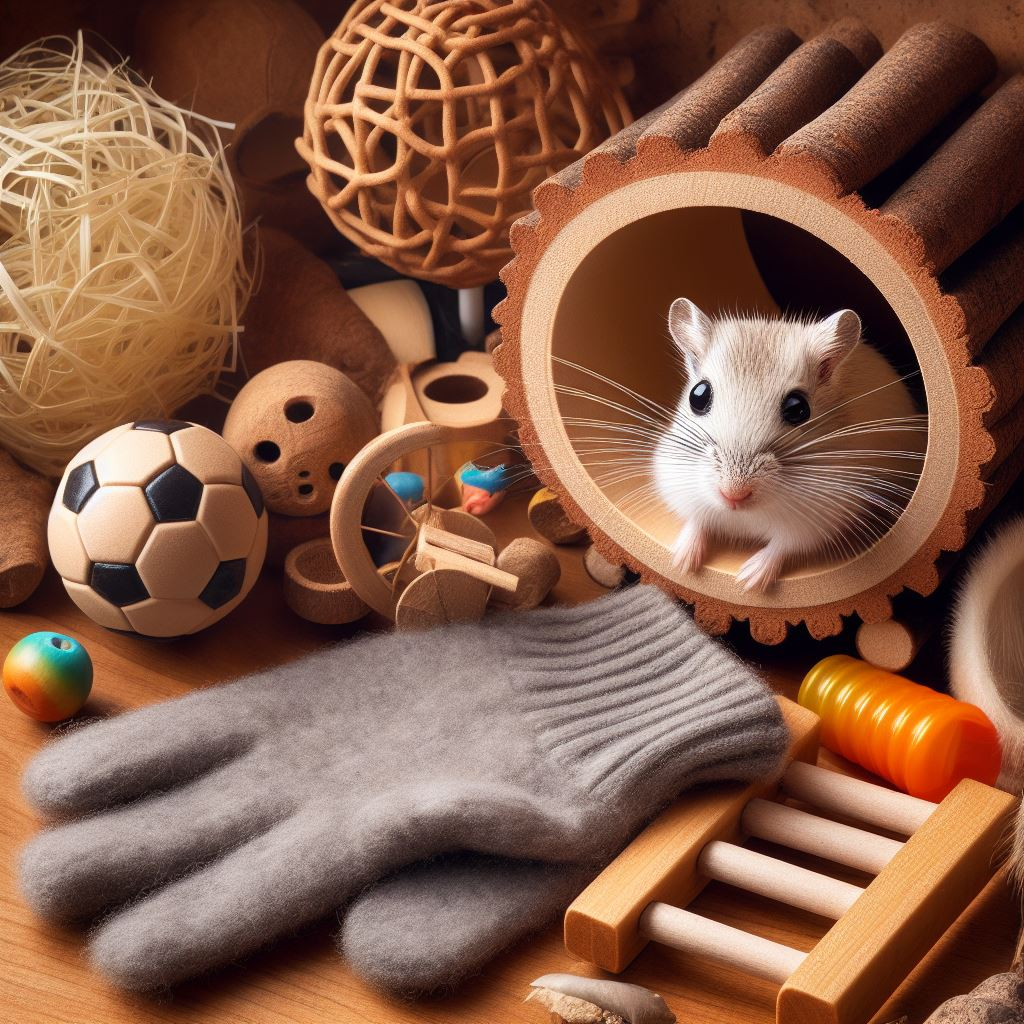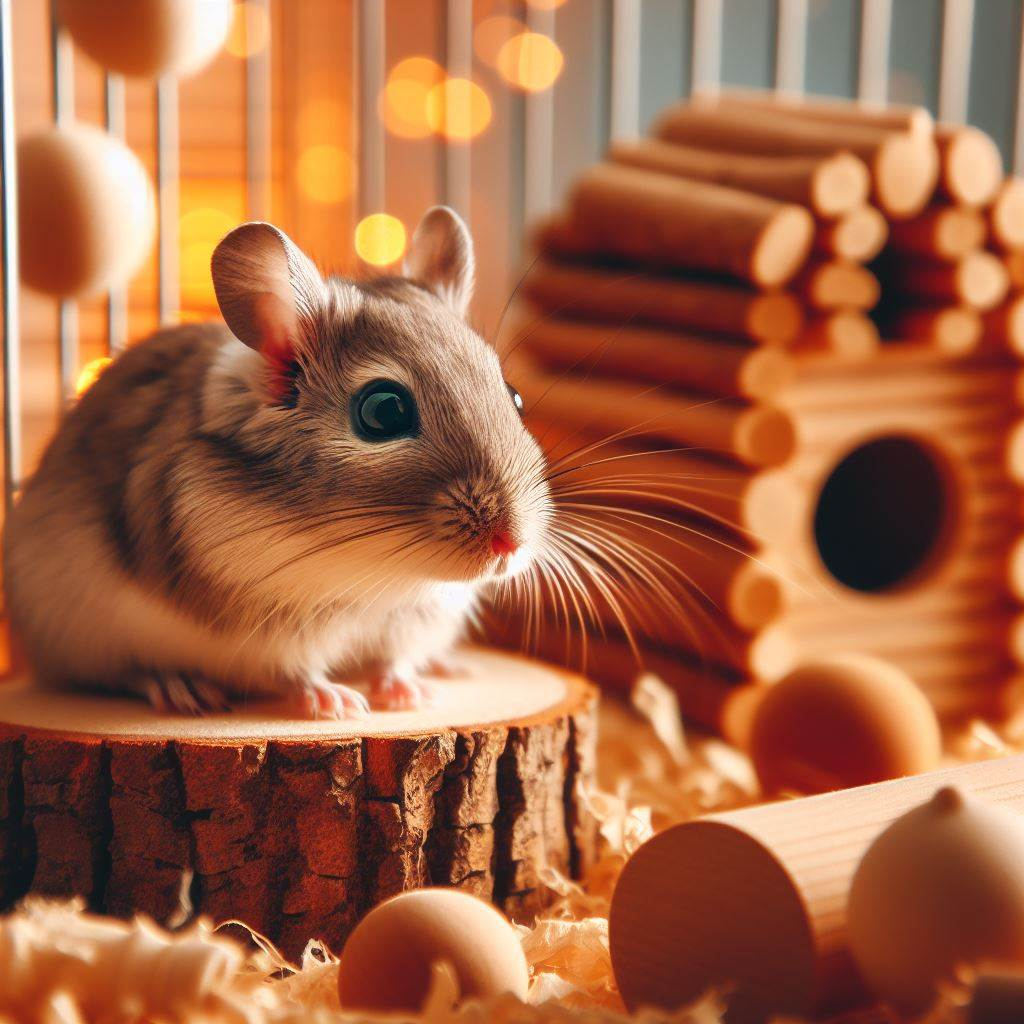Gerbils are adorable small rodents known for their strong social instincts, enjoying the company of their peers. Many gerbil enthusiasts opt for cohabitation as it provides a sense of security and happiness while reducing loneliness and stress. However, having gerbils share the same cage is not a simple matter; it requires caretakers to understand some essential conditions and considerations to ensure harmonious living. This article will delve into the relevant knowledge of cohabitating gerbils, assisting you in better caring for your furry friends.
Basic Conditions for Gerbil Cohabitation
If you plan to house two or more gerbils together, two fundamental conditions need to be met:
-
Same-Sex Pairing: Gerbils are highly prolific animals with a short gestation period of 24 days, capable of giving birth to 3 to 10 offspring per litter. To prevent unwanted breeding, ensure that your gerbils are of the same sex. Distinguishing gender is relatively easy by observing their external genitalia – male gerbils have noticeable testicles, while females have a covered vaginal opening.
-
Familiarity with Each Other: Gerbils possess a strong territorial instinct, marking their space with urine and secretions. Introducing unfamiliar gerbils may lead to conflicts, even resulting in fatal injuries. Hence, it’s crucial to ensure that cohabiting gerbils are familiar with each other, preferably raised together from a young age.
Guidelines and Suggestions for Gerbil Pairing
After fulfilling the basic conditions of same-sex pairing and familiarity, consider the following guidelines and suggestions to facilitate a smoother cohabitation:
-
Prefer Pairing from the Same Litter: Gerbils born in the same litter make ideal pairs as they develop deep bonds and trust from a young age, reducing the likelihood of conflicts. If finding gerbils from the same litter is challenging, consider pairing siblings from different litters or offspring from the same mother, as these shared kinship relations can also minimize potential disputes.
-
Addressing Age Disparities: Gerbils typically live between 2 to 4 years, and varying ages may lead to differences in vitality and needs. Introducing a young gerbil to an elderly one might disrupt the older gerbil’s rest or provoke challenges to its position. Opt for gerbils with similar ages or at least ensure the age gap is not more than 6 months.

Common Misconceptions About Gerbil Cohabitation
In addition to the mentioned conditions and recommendations, avoid falling into these misconceptions to prevent unnecessary troubles:
-
Differentiating Genders to Prevent Breeding: Contrary to the belief that gerbil gender is hard to discern, it’s relatively easy by carefully observing their external genitalia. Confirm the gender when purchasing gerbils or consult a vet. Ensuring same-sex pairing is crucial, preventing an explosion in gerbil population.
-
Avoid Late-Stage Cohabitation of Adult Individuals: While gerbils are generally friendly, introducing a new gerbil into an existing cage can lead to intense conflicts, even fatalities. Gerbils have a robust territorial awareness and won’t easily accept a stranger. If cohabitating adult gerbils, use a gradual introduction method to help them become familiar and accepting of each other.
Designing and Preparing the Gerbil Habitat
After selecting suitable gerbil pairs, prepare a fitting habitat for their comfort and safety. Pay attention to the following:
-
Consider Cage Space: Gerbils are highly active creatures, enjoying running, digging, and chewing. Providing ample space is crucial for two or more gerbils in the same cage. A general rule is at least 0.1 square meters per gerbil; thus, if you house two gerbils, a minimum of 0.2 square meters is needed, and so forth. Adjust the space based on their personalities and activity levels for increased comfort.
-
Importance of Hideouts and Toys: Gerbils are sensitive animals requiring a secure and private space to retreat from external threats. Provide hiding spots such as wooden houses, cardboard boxes, or ceramic jars for resting and sleeping. Additionally, offer toys like wooden sticks, exercise wheels, and grass balls for chewing and playing, promoting dental and physical health.
Observing Gerbil Behavior and Health Management
Once you’ve set up an appropriate habitat, regularly observe your gerbils’ behavior and health to promptly address any issues. Focus on the following aspects:
-
Interpreting Mutual Grooming: Gerbils are intimate animals that groom each other using their teeth and tongues as a friendly and affectionate gesture. Witnessing mutual grooming indicates a positive relationship, demonstrating trust and respect. You can mimic the grooming action by gently stroking their heads and backs with your fingers to convey care and warmth.
-
Dealing with Gerbil Conflicts and Prevention: Despite their friendly nature, gerbils may engage in conflicts due to reasons like territory, food, toys, or gender dynamics. If conflicts arise, separate them immediately to prevent severe injuries. Prevent conflicts by:
-
Maintaining cage cleanliness, changing bedding, food, and water regularly to avoid discomfort and tension.
-
Providing sufficient resources to avoid competition, ensuring gerbils have enough food, water, and toys.
-
Offering hiding places for gerbils to retreat and rest, preventing feelings of suppression and unease.
-
Ensuring appropriate social interactions and stimulation, reducing boredom and loneliness, which can lead to aggression.
-

Considerations During the Gerbil Cohabitation Process
If you aim to cohabitate two adult gerbils, a specific approach called the “Separated Introduction Method” is crucial for gradual acceptance. Follow these steps:
-
Select a spacious cage and divide it into two equal sections using a transparent plastic or metal partition, allowing gerbils to see and smell each other without physical contact.
-
Place one gerbil in each section with identical bedding, food, water, toys, allowing them to acclimate to their new environment. Observe their reactions – if they exhibit curiosity, excitement, or friendliness, proceed to the next step. If they display fear, anger, or hostility, provide more time until their emotions stabilize.
-
Swap the positions of the gerbils daily, allowing them to enter each other’s territory, familiarizing themselves with scents and habits. This enhances intimacy and trust while reducing territorial instincts and the desire for conflict.
-
Observe their behavior during the position exchanges. If they appear calm, comfortable, or happy, it indicates acceptance, allowing you to progress. If they seem nervous, uneasy, or discontent, continue with the position exchanges until their emotions settle.
-
If, during the exchanges, you notice gerbils on opposite sides grooming each other, sniffing, or playing, these are positive signals indicating friendship. Proceed to the final step – cohabitation.
-
Cohabitation: Before placing both gerbils together, thoroughly clean the cage, removing all scents and markings. Provide new bedding, food, water, and toys, creating a completely new environment with no advantage for either party. Introduce both gerbils to the cage and observe their behavior. If they exhibit peaceful, friendly, or intimate attitudes, they have successfully cohabitated. You can confidently let them live together. If signs of tension, discomfort, or hostility emerge, separate them again, repeating the above steps until they can peacefully coexist.
Conclusion



